Photos by Scott Buschman
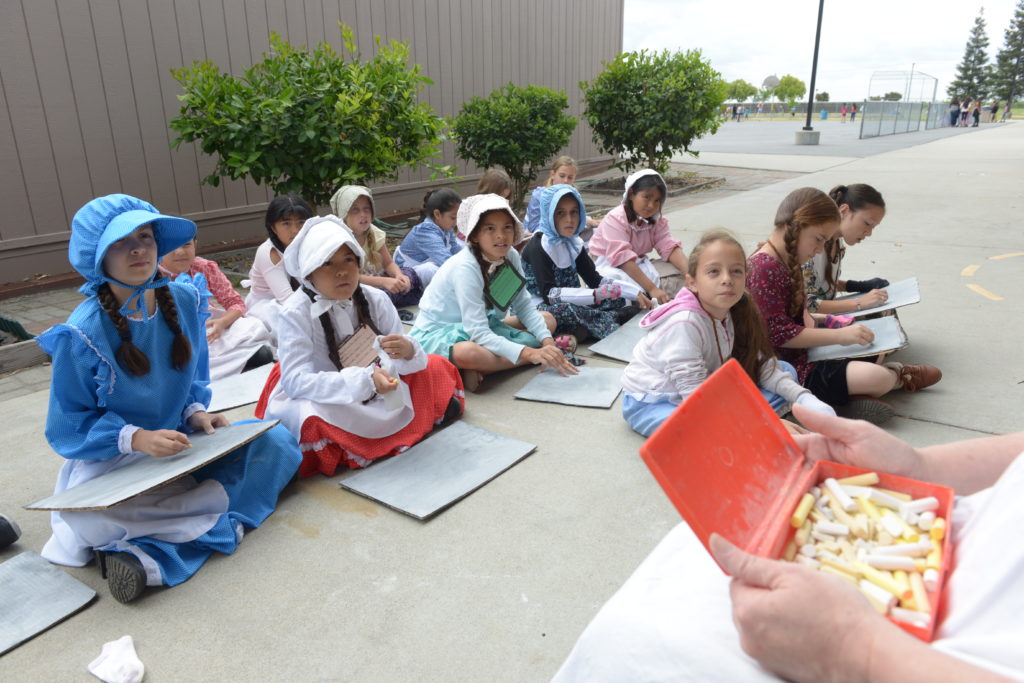
The girls wear braids, bonnets and long dresses. The boys sport suspenders and caps. Students share their “readers” with classmates. During recess they pitch pennies and play jacks and pick-up-sticks. At PE, they square-dance.
No, this isn’t Little House on the Prairie; it’s third-graders at Dena Boer Elementary School in Salida going back in time to fully comprehend pioneer and Native American life in the 1850s. It happens every May.
“Their whole world changes,” says teacher Lenora Gerber, who started the tradition over two decades ago in this rural community near Modesto. “It’s a great way to end the school year.”
Gerber and fellow third-grade teachers Lori Hall and Michelle Kwietkauski, all members of the Salida Teachers Association, take the “Wagons Ho — Pioneer Days and the West We Go!” project seriously, and so do the children.
-
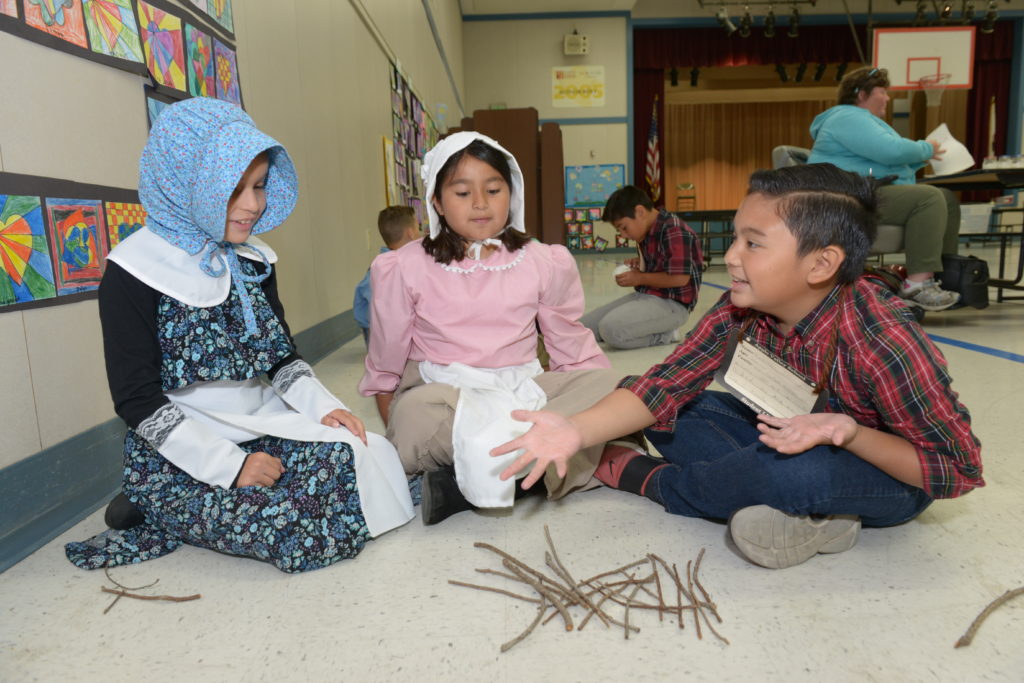
Adamariz Betancourt, Jayne Lopez and Dylan Duran play pick-up-sticks. Dylan wears a placard describing the character he is role-playing. -
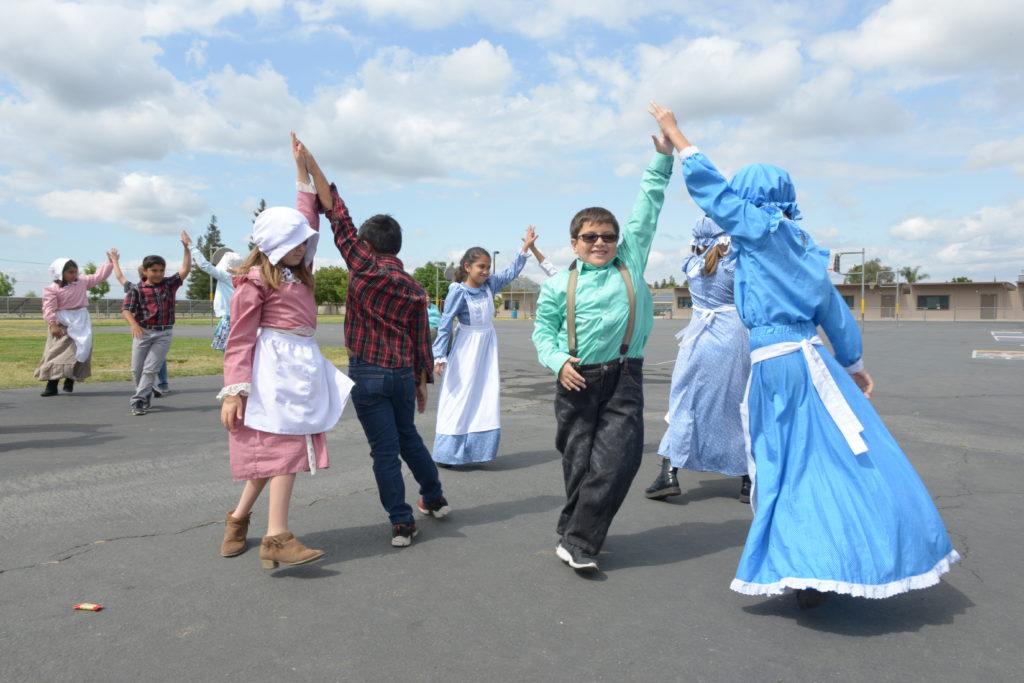
Students take their partner by the hand for a square dance.
“ Students learn that freed slaves and Native Americans were extremely mistreated and not treated equally. We have important discussions about the social injustice of the era.” — Lori Hall, Salida Teachers Association
Lights are off to simulate life without electricity. Paper, pencil and computer are replaced with slate and chalk. Students learn to weave cloth and Native American baskets, churn butter, make strawberry jam and ice cream, and bake pretzels. Boys sit on one side of the room and girls on the other.
-
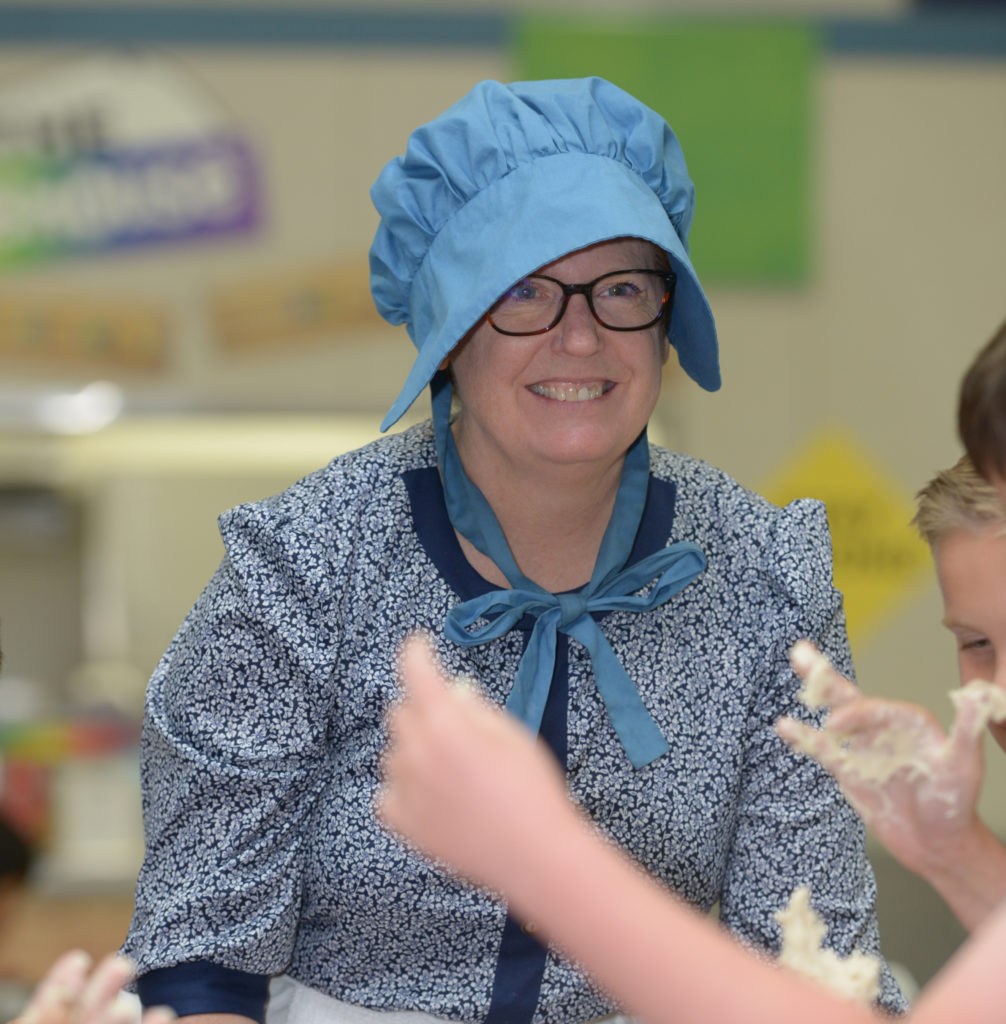
Teacher Lori Hall helps students with pretzel making. Students also learn how to make butter, strawberry jam and ice cream. -
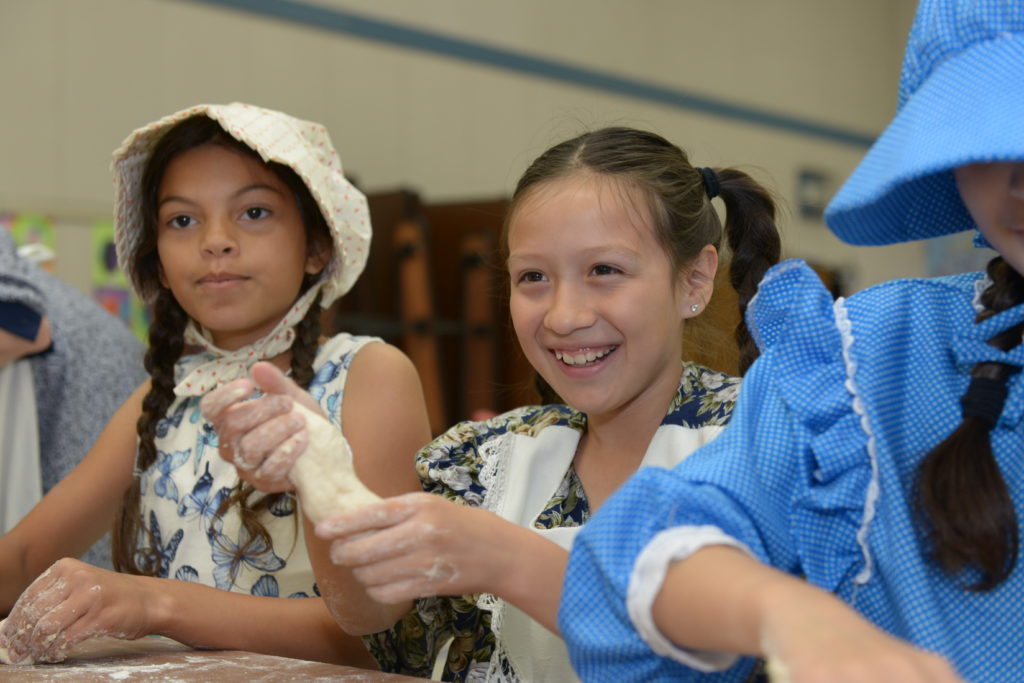
Marieli Magana, center, has fun kneading her pretzel dough. -
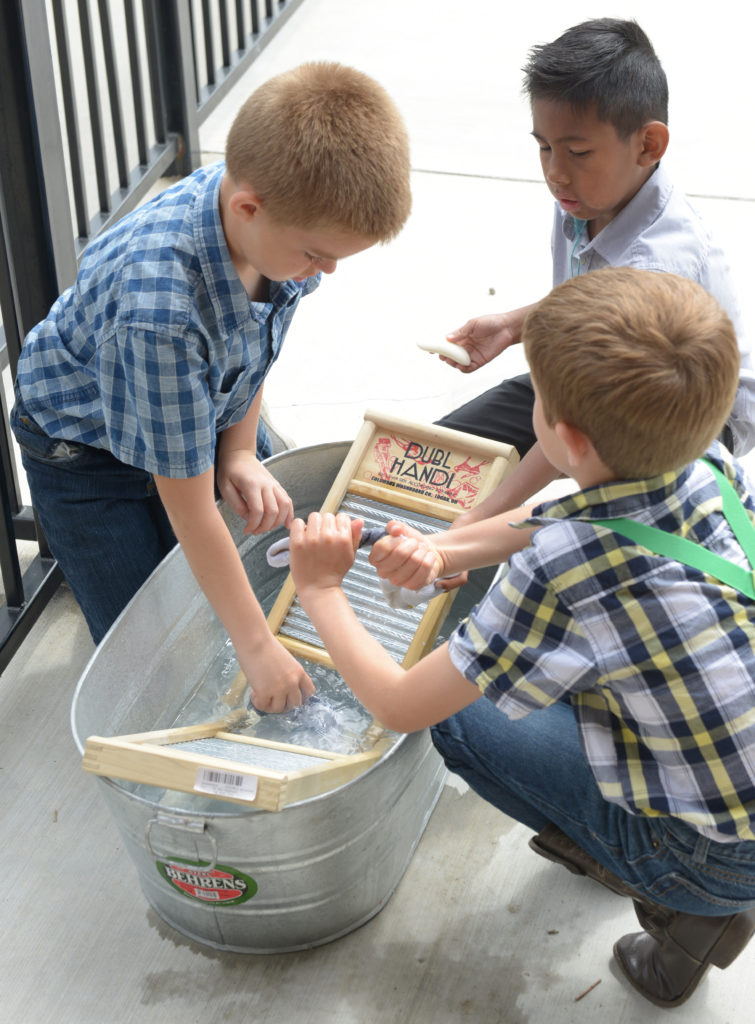
For this project, boys share the work equally with girls, such as washing their socks with a tub and washboard. -
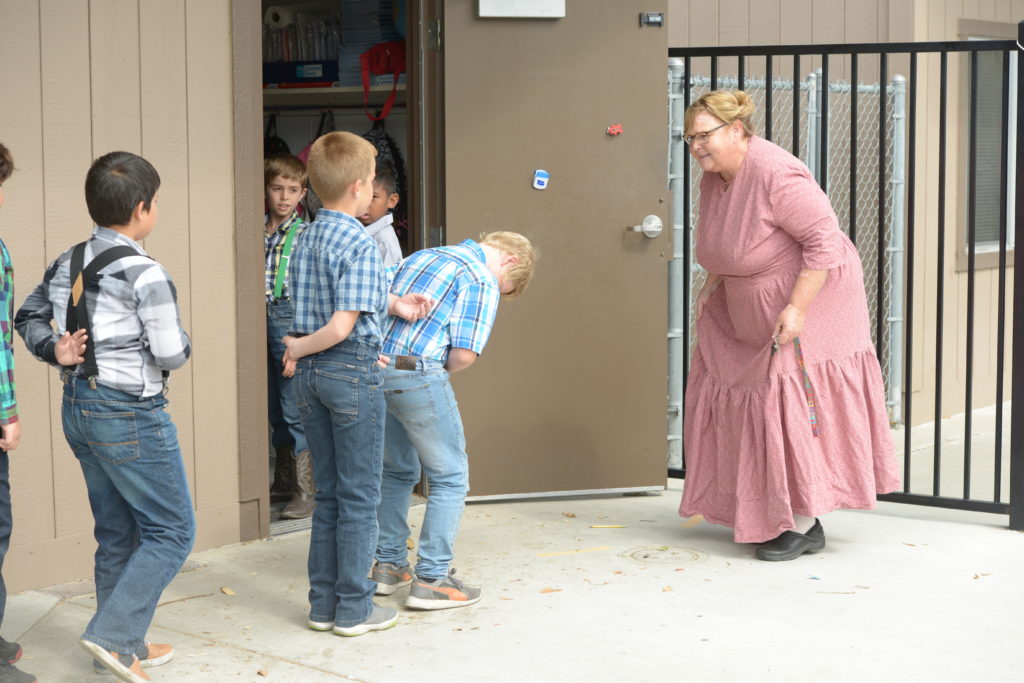
As boys return to the classroom after recess, they bow respectfully to their teacher (Lenora Gerber), and she returns the gesture with a curtsey. -
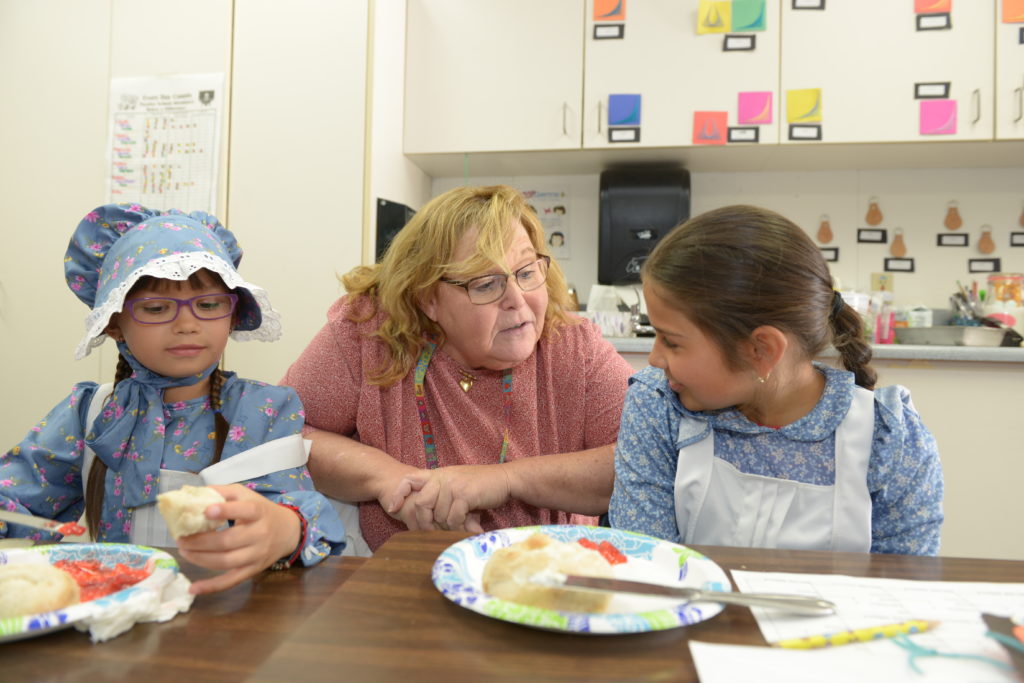
Ana Villilvazo and Grecia Marquez enjoy their freshly baked pretzels as Lenora Gerber looks on. -
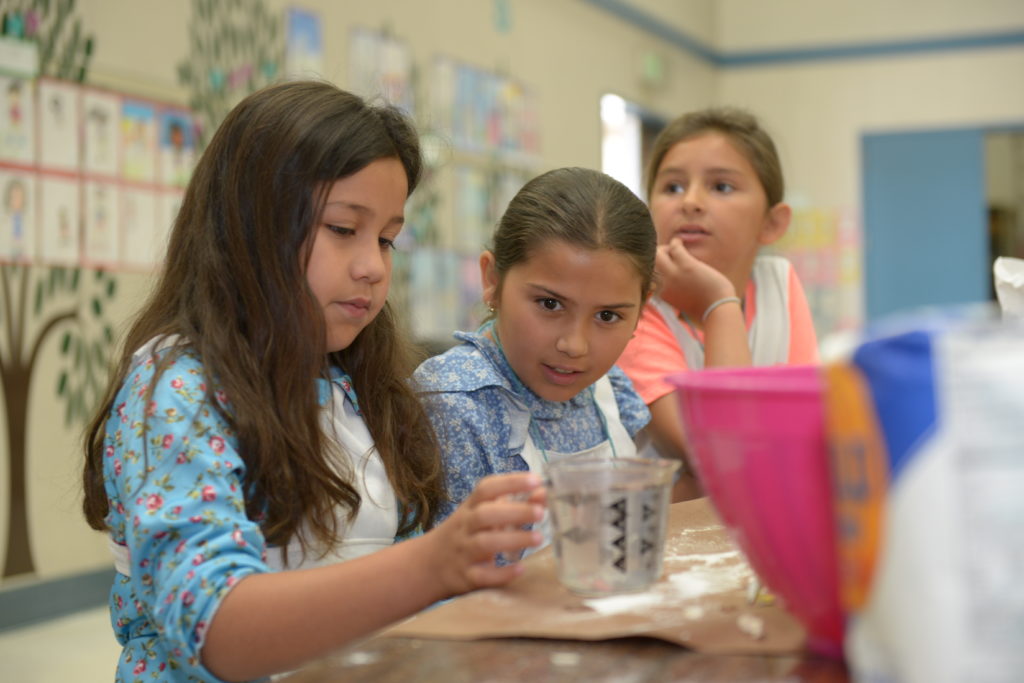
Jazmine Barreras, Grecia Marquez and Giselle Brown follow the pretzel recipe.
Last year, the project received grant money from CTA’s Institute for Teaching, which has been a longtime leader in rewarding innovative educators.
Classrooms at the fictitious “Apple Valley School” are modeled after a one-room schoolhouse, and teachers incorporate hands-on projects with state standards. Each student assumes a new identity, becoming a child from the past, with a new name, age and persona. Students have other “family members” in the classroom and work cooperatively with them as a team throughout the two-week event. The older the child, the more responsibilities he or she has.
The family groups include:
- Farmer’s children, who at times may have to miss school to help with the crops.
- Newly freed slaves, who lack the staples and other supplies schoolchildren bring with them.
- The storekeeper’s children, who always have abundant supplies.
- The Allen boys from the reverend’s family: Matthew, Mark, Luke and John.
- Other groups of siblings.
The teachers also take on new identities. They are single, since female teachers were not allowed to marry in the 1800s. Many had to live with the families of students, since they were not supposed to live independently.
Educating students about the political
realities of the past is incorporated
into the unit. Students learn about the Underground Railroad, which
helped transport slaves to the North, and
the hardships and unfairness that Native
Americans suffered. Their studies involve
reading appropriate texts and watching
informative programs.
“Students learn that freed slaves and
Native Americans were extremely mistreated
and not treated equally in any
way,” says Hall. “They realize that the land
was taken away from the Native Americans.
We have important discussions
about the social injustice of the era.”
Every morning when students walk in
the door, a “clean hands and clean face
check” takes place, and then they’re
assigned “fates” based on possible scenarios of that era. For example, a student
may have a sick lamb at home and
miss school to take care of it. Or they
may have to walk five miles into town to
unhitch a horse named Snowball because
their parents are occupied. Fortunately,
students don’t really have to do these
things, but they get an idea of challenges
pioneer youngsters faced.
Students also learn about other challenges
in the days of yore — in class
they received a “swat” if they misbehaved
and had to wear a dunce cap if
they were caught daydreaming or gave
a wrong answer. However, during the
re‑enactment, they receive points for
participation, not punishment. They
must acquire a certain number of points
to “graduate” during a ceremony attended
by their real families, where children can
show off their square dancing moves.
Students, for the most part, develop an
appreciation for the era they really live in.
“We get to make fun stuff and learn fun
things, but I wouldn’t want to live during
that time, because it’s a hard life and you have to work hard all day,” confides Alvaro
Calderon. “If you wanted something and
you didn’t have money, you’d have to trade
for it. And if you got sick or stung by a bee,
there wasn’t modern medicine, so you
just had to pray.”
Reagan Noble read a book about
“amazing ladies” of that era, which made
her appreciative that she will never have
to wear a corset. She is also grateful that
women today can choose any profession
— not just teaching — and can vote and
own property.
Boys in pioneer times
eschewed “women’s work”
such as washing clothes
and cooking. However, for
this project, boys and girls
equally share the cooking
and even wash socks by
hand with a washboard and a
bar of soap, which they do not
find especially fun.
In the end, both students
and teachers learn from
the experience.
“I love teaching this,” says Gerber. “Normally the end of the year is pretty chaotic. But during Pioneer Days, students don’t even think about being disruptive. That’s because they are learning so many interesting things and having so much fun.”
The Origin of Everyday Sayings
In Dena Boer Elementary
School’s “Wagons Ho — Pioneer
Days and the West We Go!”
project, youngsters learn how
to sew a button and hold a
hammer, and they learn the real
meaning of everyday sayings.
“Waste not, want not,” for example, has taken on new meaning for student Ana Villavazo, who understands that pioneers needed everything at their disposal for survival, while people today think nothing of throwing away excess food.
Another saying, “throwing the baby out with the bath water,” refers to the fact that the entire family used the same tub of water for a bath every week or so, and the baby was always bathed last. The water was so dark by then it could be difficult to see the baby.
The expression “It’s raining cats and dogs” refers to a time when houses were made of mud, and cats and dogs stayed up on the thatched roofs. When it rained extremely hard, the cats and dogs fell through.
The Discussion 0 comments Post a Comment